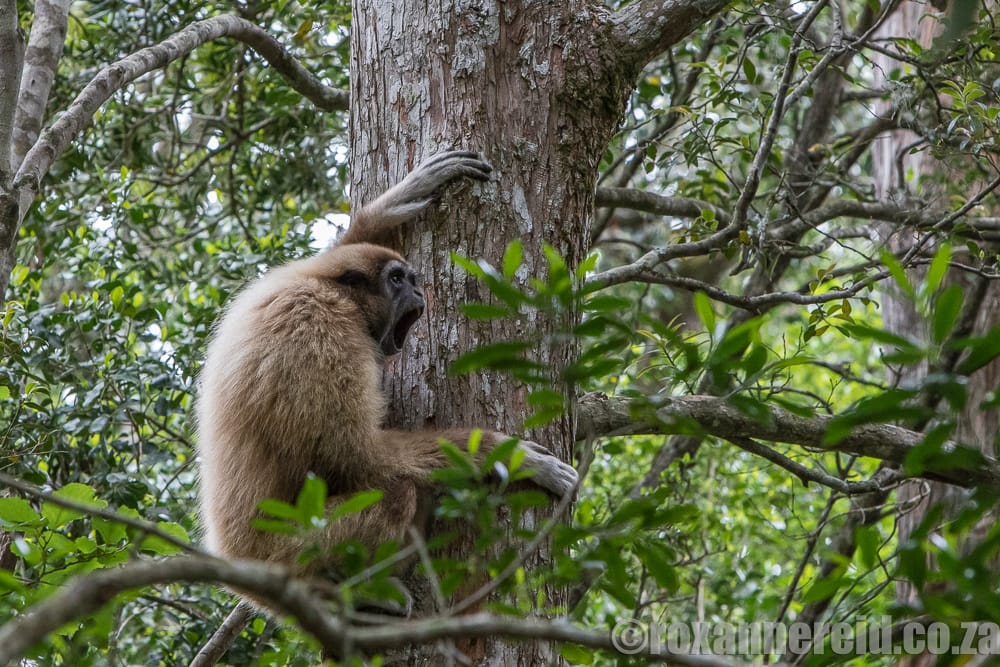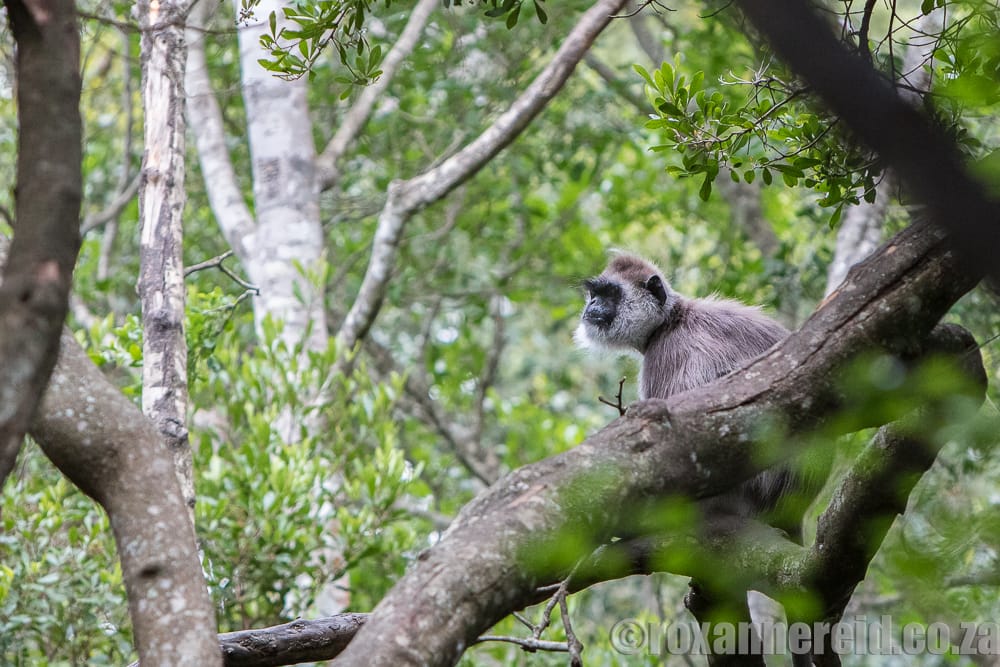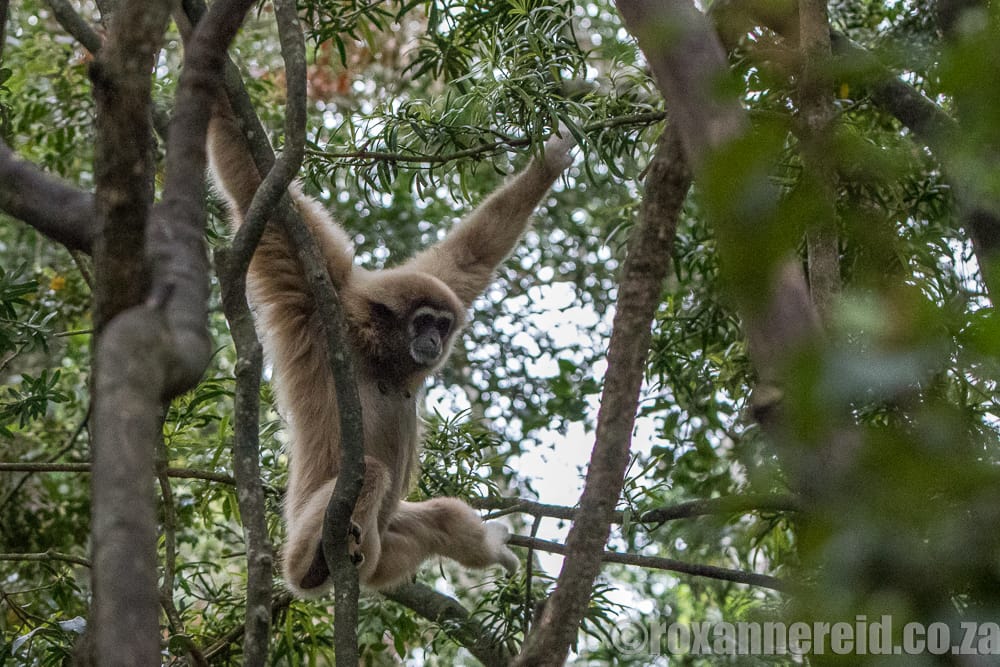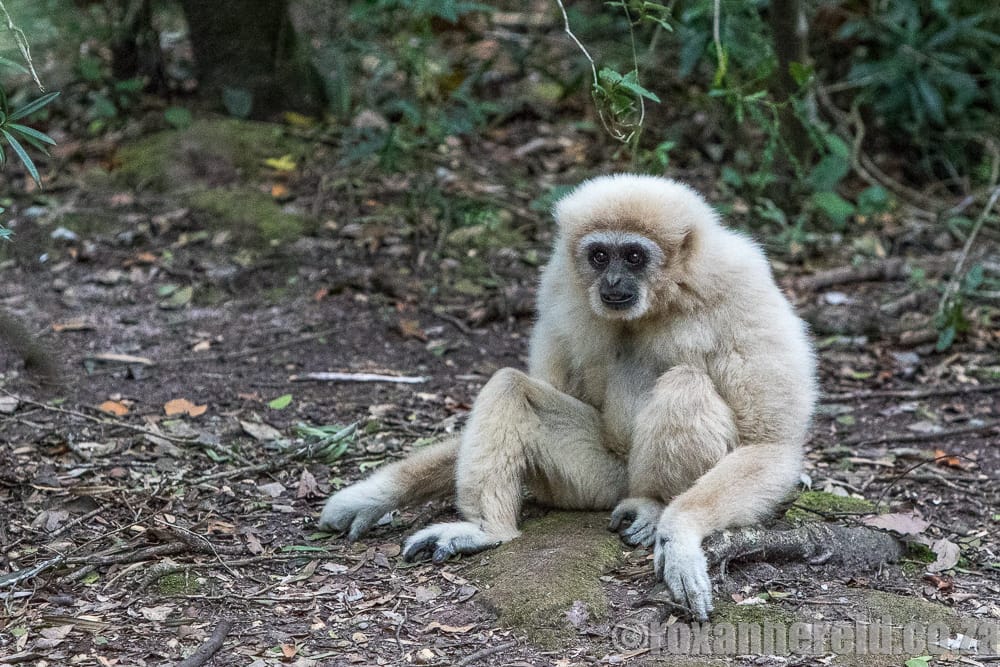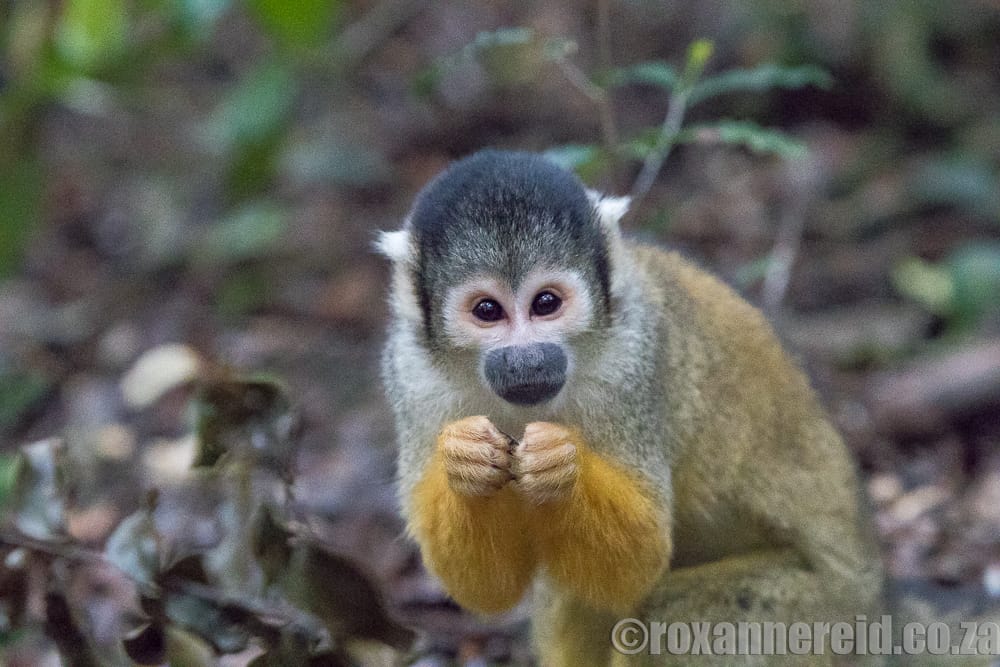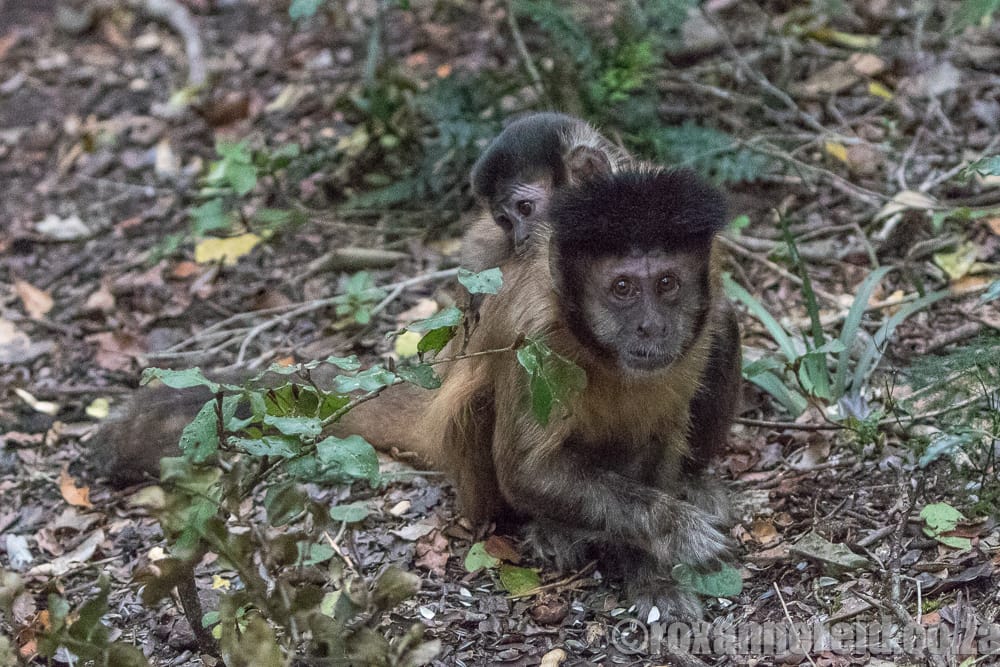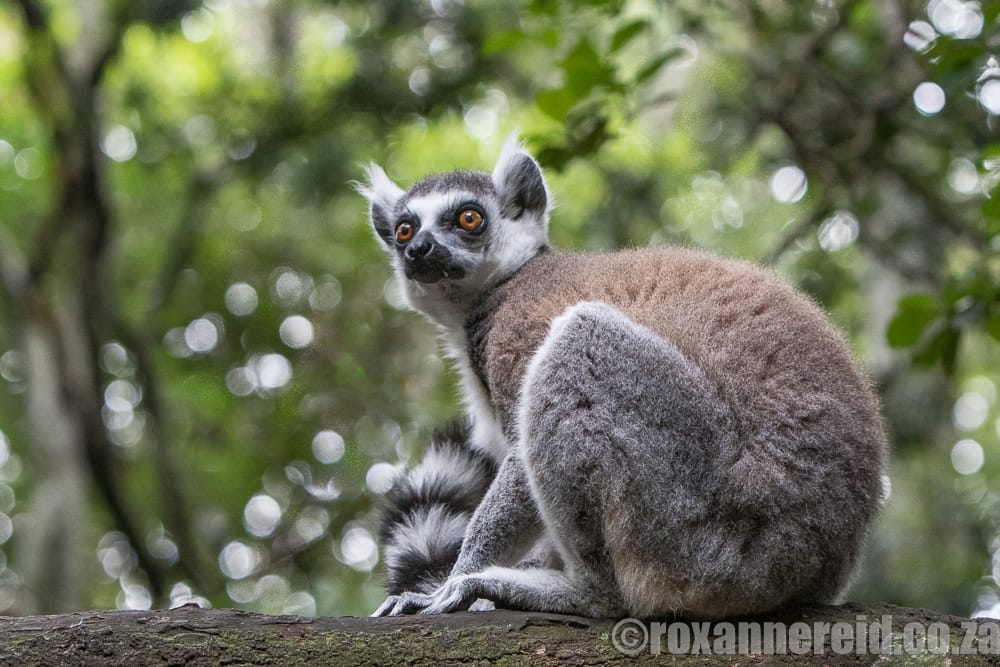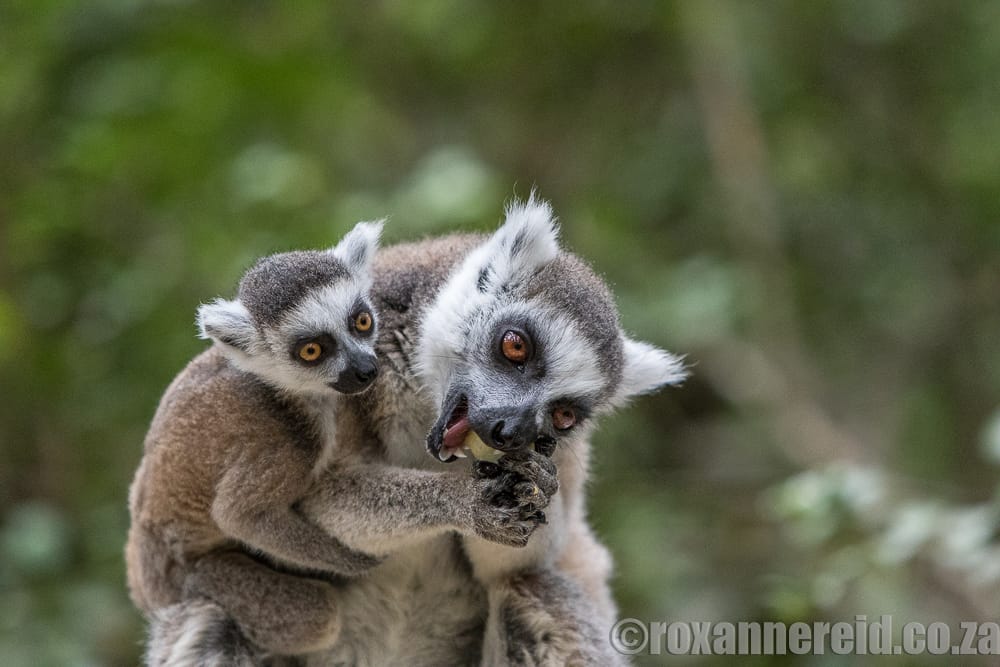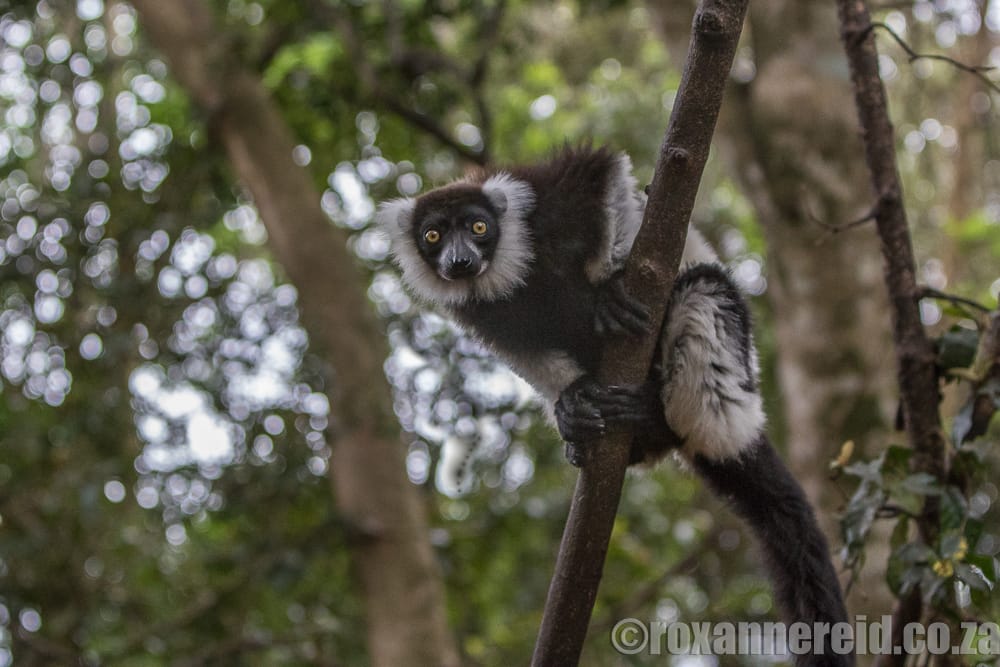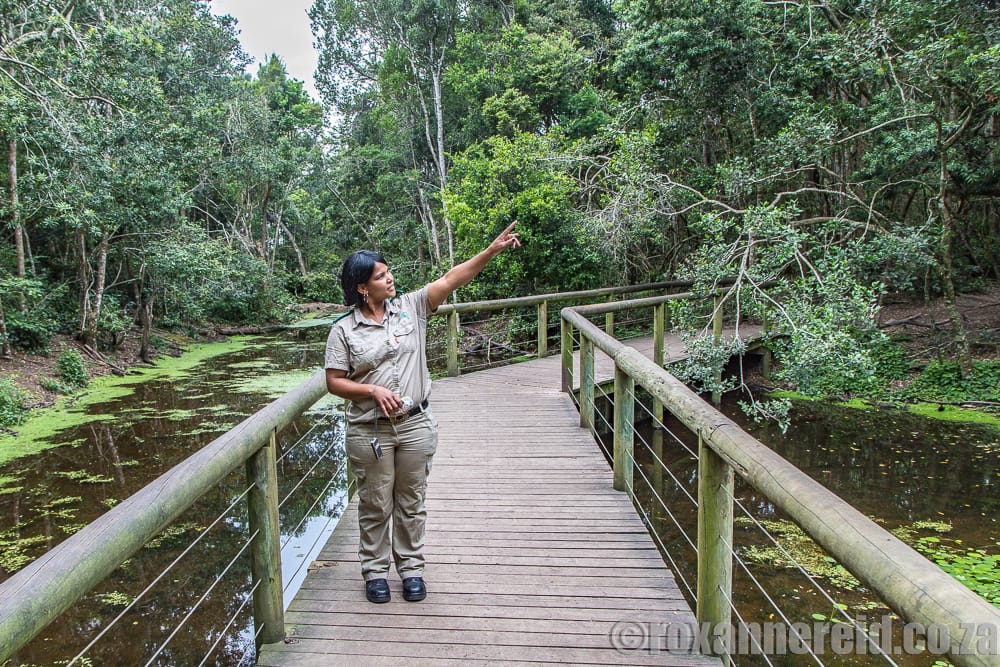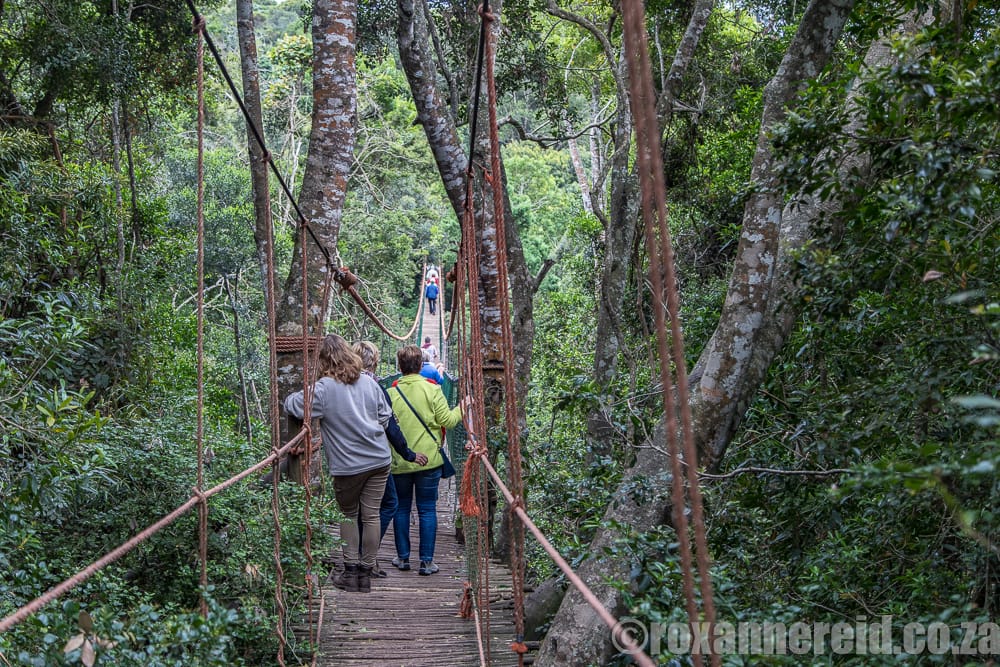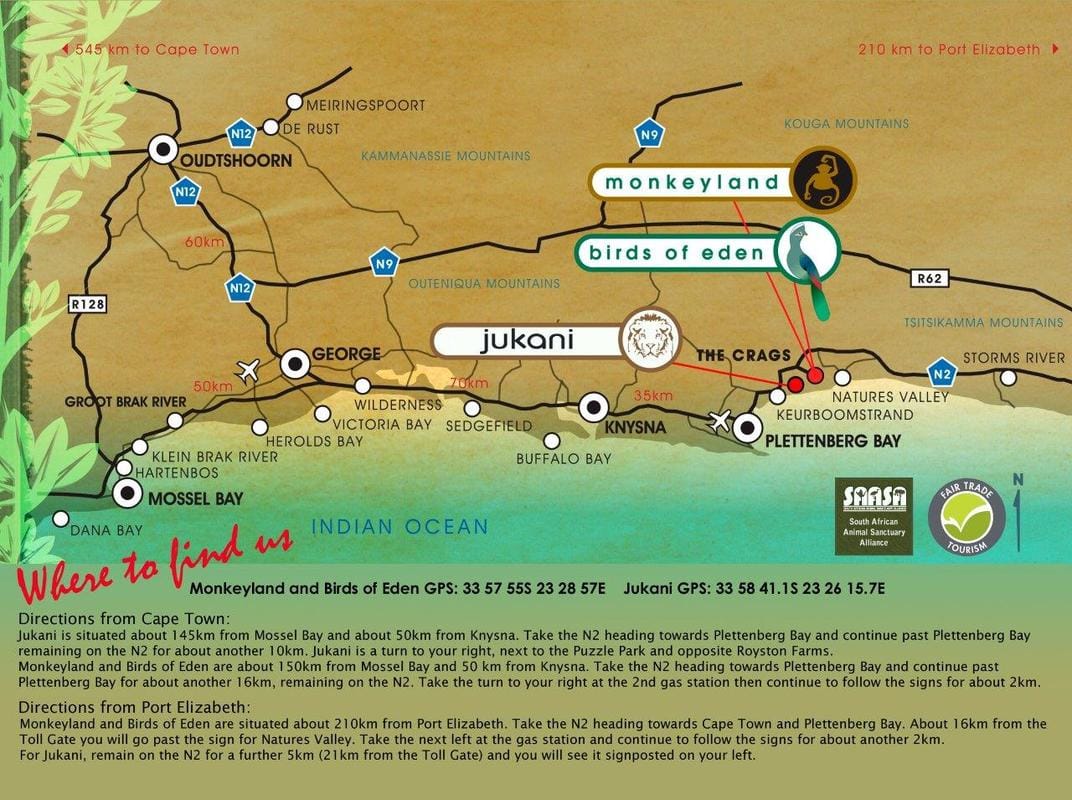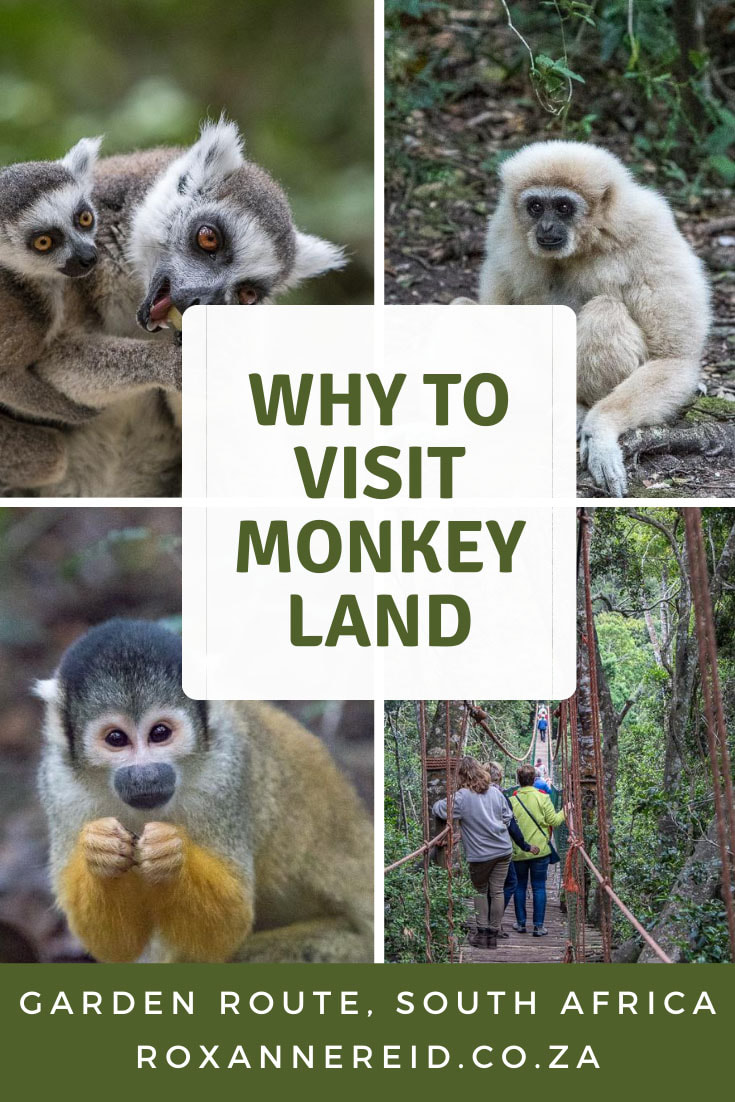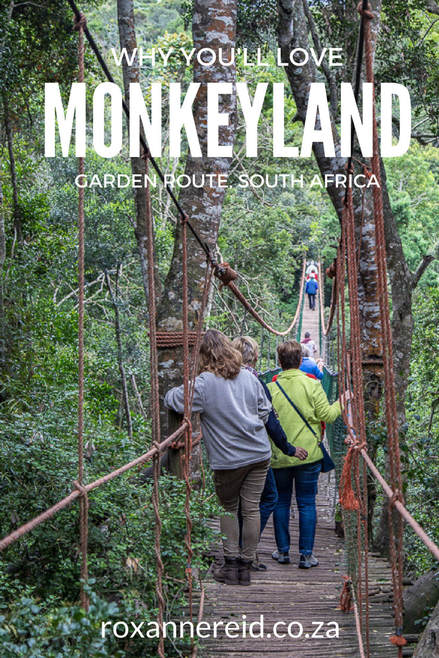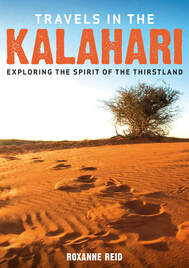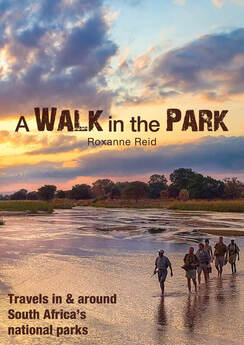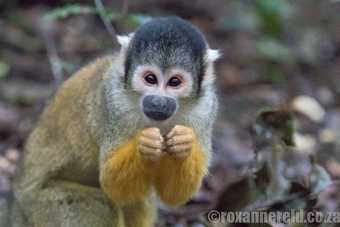
Take a holiday on South Africa’s Garden Route and you’ll find lots of things to keep you amused. If you’re looking for a great day out for people of all ages, here’s why you’ll love Monkeyland near Plettenberg Bay and meeting some of its entertaining residents.
Gibbon pairs sing this duet every day. ‘At first when the female arrived at Monkeyland she wanted nothing to do with our male,’ guide Felencia Draai explained. He persisted for two years until he finally won her over. ‘But they’re not the loudest of our residents – that would be the black howler monkey. Its call carries for five to six kilometres.’
Monkeyland claims to be the world’s first free roaming multi-species primate sanctuary. It’s a sister sanctuary to the South African Animal Sanctuary Alliance (SAASA)’s Jukani and Birds of Eden sanctuaries. It’s Fair Trade accredited so you know it’s being run on ethical principles that include respect for the animals and their environment, as well as sustainability.
Monkeyland opened in 1998 with two main purposes. First, it serves as a ‘forever home’ for monkeys rescued from captivity. About 550 animals of 11 different species share 12ha of indigenous forest, where they can live in peace and feed on berries, fruits and leaves. The mere act of searching gives them mental stimulation they lacked in captivity.
The sanctuary’s second purpose is to create awareness about the plight of primates and the threats they face. The idea is to educate visitors about the negative effects of keeping primates as pets or participating in the pet-play-pay industry that’s rife throughout the world.
The experience
A guide takes you on an hour-long walk through the forest to see monkeys, lemurs and apes roaming freely through the trees and among the leaf litter. You’ll learn about their habits and abilities, and hear about the short- and long-term hardships of captivity.
Both species are highly intelligent and the capuchins even know how to use tools; for instance, they’ll open nuts with rocks. They have a tuft of dark hair on their heads and each ‘hairstyle’ is a little different. We amused ourselves deciding whether they looked like devil’s horns or Elvis or Tina Turner – you get the idea.
For me the most fascinating residents were the lemurs – the black and white ruffed lemur that barks like a dog and the famous ring-tail lemur that’s well known to millions from the animated movie Madagascar. I always thought King Julien was a bit camp and at Monkeyland I discovered that in the real world it’s the females that are dominant, so Queen Julienne it should be!
On our walk through the forest we noticed some large cages and asked Felencia what they were about. ‘We use them as pre-release cages so that new animals that have been in captivity can get used to the forest environment before they’re released,’ she said. ‘We monitor their interactions with other monkeys and with humans and usually release them after about three months.’
Our final sighting was of a Hanuman langur, or temple monkey. They come from India, where they are protected by law and believed to be sacred. Although their low brows and downturned mouths make them look grumpy, they’re apparently non-aggressive in the wild and live even in big cities.
- Find Monkeyland just off the N2 about 15km east of Plettenberg Bay (see map and directions).
- Unless you’re a big group of more than 15, simply rock up. Tours run every 15 or 20 minutes so it won’t take long before there’s one for you to join.
- Monkeyland is open from 8:00 every day of the week, including Sundays. The last tour leaves at 16:00.
- There’s a shop and restaurant on site and plenty of parking.
- You can buy a ticket just for Monkeyland, or a reduced-rate cluster ticket that will also give you access to SAASA sister sanctuaries, Birds of Eden and Jukani Wildlife Sanctuary (big cats).
Like it? Pin this image!
Why to visit Jukani Wildlife Sanctuary near Plett
Copyright © Roxanne Reid - No words or photographs on this site may be used without permission from roxannereid.co.za
